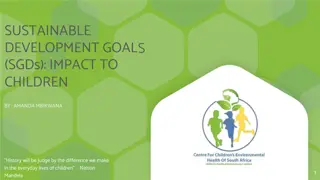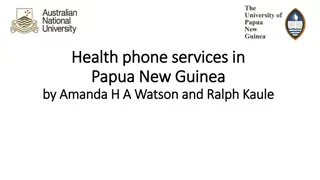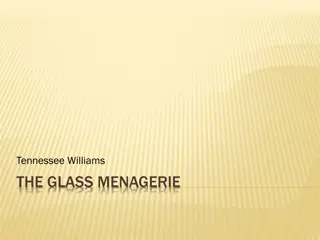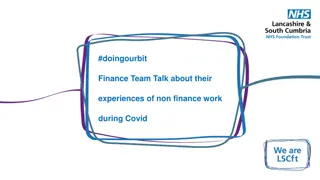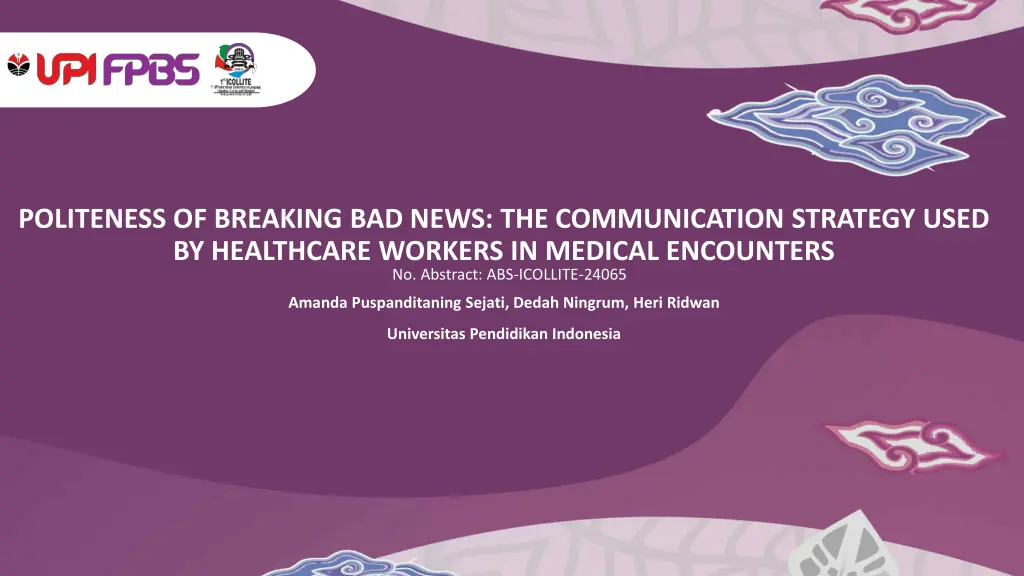
Understanding Politeness in Breaking Bad News Communication
Explore the use of politeness strategies by healthcare professionals when delivering bad news in medical settings through the analysis of communication behavior. Discover how polite communication can mitigate adverse effects and the various strategies employed in breaking bad news scenarios.
Download Presentation

Please find below an Image/Link to download the presentation.
The content on the website is provided AS IS for your information and personal use only. It may not be sold, licensed, or shared on other websites without obtaining consent from the author. If you encounter any issues during the download, it is possible that the publisher has removed the file from their server.
You are allowed to download the files provided on this website for personal or commercial use, subject to the condition that they are used lawfully. All files are the property of their respective owners.
The content on the website is provided AS IS for your information and personal use only. It may not be sold, licensed, or shared on other websites without obtaining consent from the author.
E N D
Presentation Transcript
POLITENESS OF BREAKING BAD NEWS: THE COMMUNICATION STRATEGY USED BY HEALTHCARE WORKERS IN MEDICAL ENCOUNTERS No. Abstract: ABS-ICOLLITE-24065 Amanda Puspanditaning Sejati, Dedah Ningrum, Heri Ridwan Universitas Pendidikan Indonesia
INTRODUCTION The primary goal of healthcare services is improving the quality of health facilities, clinical competence, and communication skills (Bradley & Postlethwaite, 2003). Breaking bad news in a medical setting can be required as a challenging healthcare workers need to use strategies for breaking bad news. Employing politeness in medical communication confirmed to alleviate potential adverse effects (Lelorain et al., 2018). The study revealed that healthcare professionals use face management politeness strategies when delivering bad news (Clelland & Haigh, 2023). Other research concluded that some medical professionals avoid unproductive politeness in favor of clarity of intent (Bromme, 2012). The use of politeness strategies in films has been observed, including in medical-themed films (Kinansha & Hanidar, 2023), legal-themed films (Rosari, 2016), and fictional drama films (Winerta & Hamzah, 2012). Politeness in language has also been studied in medical communication on the radio (Zhao, 2023), and in medical consultation settings (Ng, Ng, & Ng, 2016). However, studies specifically examining the use of politeness in language when delivering bad news in medical-themed films are still limited. This research aims to explore the use of politeness by doctors when breaking bad news in the New Amsterdam serial.
LITERATURE REVIEW POLITENESS Politeness refers to communication behavior that observes prevailing social and cultural norms, aiming to show respect, courtesy, and appreciation toward the interlocutor (Xafizovna, 2021). According to Geoffrey Leech, forms of politeness can be seen through the application of six maxims: the tact maxim, the generosity maxim, the approbation maxim, the modesty maxim, the agreement maxim, and the sympathy maxim (Leech, 2014). The choice of politeness strategies according to Brown and Levinson is influenced by factors such as social distance (D), relative power (P), and ranking of impositions (R) (Economidou-Kogetsidis, 2010). BREAKING BAD NEWS Breaking bad news can be a communicative challenge because it has emotional and psychological impacts on the recipient (Nurbaiduri, Mirnawati, & Haroen, 2023). The challenging nature of delivering bad news has led to conventions regarding linguistic features (Fallowfield & Jenkins, 2004, in Sweeny & Shepperd, 2017). The SPIKES method is a protocol for delivering bad news consisting of several steps (Beile et al., 2017). The written bad-news delivery structure recommended by Lehman and DuFrene (2010, in Lin, 2020) consists of five steps: introductory paragraph, explanation, bad-news statement, counterproposal, and closing paragraph. The rhetoric is a generic structure for oral delivery of bad news by doctors, which includes six steps (Sejati, Handayani, Ningrum, & Lindayani, 2023).
METHOD This study employed a pragmatic approach because the data analysis process cannot be separated from the context underlying the data. The data analysis in this research refers to the theory of politeness in language proposed by Leech (2014). The data in this research consists of the utterances made by doctors to patients and/or patients' relatives in the context of breaking bad news in "New Amsterdam" Season 1. Twelve situations involving the delivery of bad news were identified. The data collection techniques used in this study include observation, recording, and note-taking. The research steps involved watching the entire film to identify the contexts of delivering bad news and labelling the data with codes, recording conversations that occurred in the context of delivering bad news using a screen recording application in PowerPoint, and transcribing utterances that contain principles of politeness. After obtaining the politeness data, an in-depth analysis was conducted to identify patterns of politeness used by doctors when delivering bad news.
FINDING AND DISCUSSION The findings indicate that doctors adhere to various politeness principles, including the maxim of tact (9 utterances), the maxim of approbation (6 utterances), the maxim of sympathy (6 utterances), the maxim of generosity (1 utterances). Occurrence Occurrence Politeness Maxim Politeness Maxim F 6 9 0 0 6 1 22 % Maxim Maxim of of Approbation Approbation Maxim Maxim of of Tact Tact Maxim Maxim of of Agreement Agreement Maxim Maxim of of Modesty Modesty Maxim Maxim of of Sympathy Sympathy Maxim Maxim of of Generosity Generosity Total Total 27.27 40.91 0 0 27.27 4.55 100
FINDING AND DISCUSSION The tact maxim represents attitudes or utterances that provide benefits and reduce disadvantages for the interlocutor. The doctor's utterances often contain the fulfillment of the tact maxim. This can be motivated by the doctor s effort to convey information in a way that does not trigger panic or make the patient feel threatened (Kaye, 2023). Moreover, by fulfilling the tact maxim, the doctor can help ensure that the decisions and recommendations conveyed are not only based on medical aspects but also consider the emotional and psychological impact, and do not harm the patient (Fallowfield & Jenkins, 2004). The approbation maxim refers to attitudes or utterances aimed at giving compliments and reducing criticism of the interlocutor. The use of approbation in the context of breaking bad news can be motivated by the doctor's goal of eliciting a desired response, namely accepting the bad news without reacting negatively. This aligns with the function of praise as social reinforcement, which can prompt the interlocutor to show the desired response from the speaker (Omomia & Omomia, 2014). Additionally, praise has been associated with the healing process during medical interventions (Law & Gilbert, 2011). In this context, the praise given by the doctor aims to express the doctor s emotional support for the patient and/or the patient's family in facing the unpleasant situation as a result of delivering bad news (Turner & Brown, 2010). The sympathy maxim refers to the attitude of showing sympathy towards the feelings and thoughts of the interlocutor and avoiding showing antipathy. The fulfillment of this maxim is due to the significant emotional impact that often accompanies delivering bad news. Expressing sympathy helps mitigate the negative emotional impact on the patient or the patient's family, as they feel supported and understood by the doctor (Halpern, 2014). In this context, sympathy contributes to the formation of a trusting relationship between doctor and patient (Hesse & Rauscher, 2019). Furthermore, using utterances that fulfill the sympathy maxim helps doctors convey information more sensitively. This is particularly important in the context of bad news, where sensitivity and attention to the patient's emotional reactions are crucial (Halpern, 2007). The generosity maxim refers to the attitude of prioritizing the interests of the interlocutor and being willing to suffer a loss for the sake of the interlocutor. The fulfillment of the generosity maxim can foster a trusting relationship between doctor and patient. Providing additional useful information or asking in-depth questions can create an environment where the patient feels valued and understood (Ward, 2018). This reflects the doctor s generosity in supporting the patient s needs. Moreover, according to social support theory, a trusting relationship between doctor and patient can provide essential emotional support (Ommen, et al., 2011). Patients who feel emotionally supported by their doctors tend to cope better with the stress and anxiety related to their health condition.
CONCLUSION The strategies used by the doctors are reflected through the fulfillment of Leech's maxims of politeness, dominated by the fulfillment of the tact maxim, approbation maxim, and sympathy maxim. This linguistics phenomenon relates to the doctors' efforts to express emotional support for the patients, which ultimately is expected to elicit the desired response from the recipients. This study identifies effective medical communication strategies for breaking bad news, particularly involving aspects of politeness, thus offering valuable insights for medical professionals on how to communicate sensitive information while maintaining a good relationship with patients. In the field of health education, the study results can be used to develop educational materials and training in medical communication that can be utilized by medical students, doctors, or other healthcare professionals to enhance their skills in breaking bad news to patients. For future researchers, this study can open opportunities for research in the field of medical communication, both in the context of film and in actual clinical practice settings. There are also limitations of this study, namely that the data taken from the doctors' utterances and patients' responses in films do not always reflect real-world situations in medical practice due to manipulation or dramatization. Additionally, this study does not provide adequate context for each observed utterance, such as the patient's medical history or family situation, which can influence how doctors deliver bad news.
REFERENCES Abbas, F., Anjum, K., & Pasha, S. B. (2019). Speech act of apology by Pakistani English speakers through the theory of politeness. The Dialogue, 14(2), 196-213. Adekunle, O. G., & Adebayo, O. S. (2017). Politeness in Selected Independence Anniversary Speeches of Nigerian Heads of Government. Open Journal of Modern Linguistics, 7(6), 290-310. Al Shamsi, H., Almutairi, A. G., Al Mashrafi, S., & Al Kalbani, T. (2020). Implications of language barriers for healthcare: a systematic review. Oman Medical Journal, 35(2), e122. Asmara, A., & Triwardhani, I. J. (2023). Preferensi Pasien Kanker Payudara Mengenai Komunikasi Interpersonal Dokter dalam Menyampaikan Berita Buruk. WACANA: Jurnal Ilmiah Ilmu Komunikasi, 22(1), 82-92. Baile, W. F., Buckman, R., Lenzi, R., Glober, G., Beale, E. A., & Kudelka, A. P. (2000). SPIKES a six-step protocol for delivering bad news: application to the patient with cancer. The Oncologist, 5(4), 302-311. . Feng, H., Chang, H. C., & Holt, R. (2011). Examining Chinese gift-giving behavior from the politeness theory perspective. Asian Journal of Communication, 21(3), 301-317. Fukushima, S., & Sifianou, M. (2017). Conceptualizing politeness in Japanese and Greek. Intercultural Pragmatics, 14(4), 525-555. Halpern, J. (2007). Empathy and patient physician conflicts. Journal of General Internal Medicine, 22(5), 696-700. Halpern, J. (2014). From idealized clinical empathy to empathic communication in medical care. Medicine, Health Care and Philosophy, 17, 301-311. Hesse, C., & Rauscher, E. A. (2019). The relationships between doctor-patient affectionate communication and patient perceptions and outcomes. Health Communication, 34(8), 881-891. Hlavac, J., Xu, Z., & Yong, D. X. (2015). Intercultural pragmatics at work:(Self-) perceptions of intercultural behavior of Chinese and English speakers and interpreters in healthcare interactions. Intercultural Pragmatics, 12(1), 91-118. Isriawaty, F. S. (2015). Tanggung Jawab Negara Dalam Pemenuhan Hak Atas Kesehatan Masyarakat Berdasarkan Undang Undang Dasar Negara Republik Indonesia Tahun 1945 (Doctoral dissertation, Tadulako University). Kaye, P. (2023). Breaking Bad News: a ten step approach. Scion Publishing Ltd. Sobczak, K., Leoniuk, K., & Janaszczyk, A. (2018). Delivering bad news: patient s perspective and opinions. Patient Preference and Adherence, 2397-2404. Studer, R. K., Danuser, B., & Gomez, P. (2017). Physicians' psychophysiological stress reaction in medical communication of bad news: a critical literature review. International Journal of Psychophysiology, 120, 14-22. Sweeny, K., & Falkenstein, A. (2015). Is waiting the hardest part? Comparing the emotional experiences of awaiting and receiving bad news. Personality and Social Psychology Bulletin, 41(11), 1551-1559. Sweeny, K., & Shepperd, J. A. (2007). Being the Best Bearer of Bad Tidings. Review of General Psychology, 11(3), 235 257. https://doi.org/10.1037/1089-2680.11.3.235 Taylor, C. J. (2004). The language of film: corpora and statistics in the search for authenticity. Notting Hill (1998), a case study. Miscel nea: A Journal of English and American Studies, (30), 71-86. Terkourafi, M. (2015). The pragmatics of politeness by Geoffrey Leech. Language, 91(4), 957-960. Turner, R. J., & Brown, R. L. (2010). Social support and mental health. A Handbook for The Study of Mental Health: Social Contexts, Theories, and Systems, 2, 200-212. Ward, P. (2018). Trust and communication in a doctor-patient relationship: a literature review. Arch Med, 3(3), 36. Wetter, T., & Nuse, R. (1992). Use of natural language for knowledge acquisition: Strategies to cope with semantic and pragmatic variation. IBM Journal of Research and Development, 36(3), 435-468. Winerta, V., & Hamzah, R. A. S. (2012). An Analysis of Politeness Strategies in Requesting Used in Real Human and Non-Human Conversation On Avatar Movie. English Language and Literature, 1(1). Xafizovna, R. N. (2021). The category of politeness in different linguocultural traditions. Academicia: An International Multidisciplinary Research Journal, 11(2), 1667-1675. Zhao, X. (2023). A politeness-theoretic approach to mitigated disagreements in online radio medical consultations. Pragmatics and Society. Zhou, K., Aiello, L. M., Scepanovic, S., Quercia, D., & Konrath, S. (2021). The language of situational empathy. Proceedings of the ACM on Human-Computer Interaction, 5(CSCW1), 1-19. Zieli ska, P., Jarosz, M., Kwieci ska, A., & B tkowska-Korpa a, B. (2017). Main communication barriers in the process of delivering bad news to oncological patients medical perspective. Folia Medica Cracoviensia.















